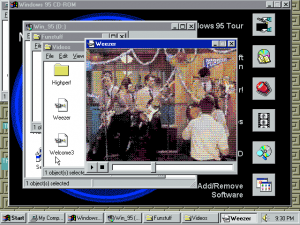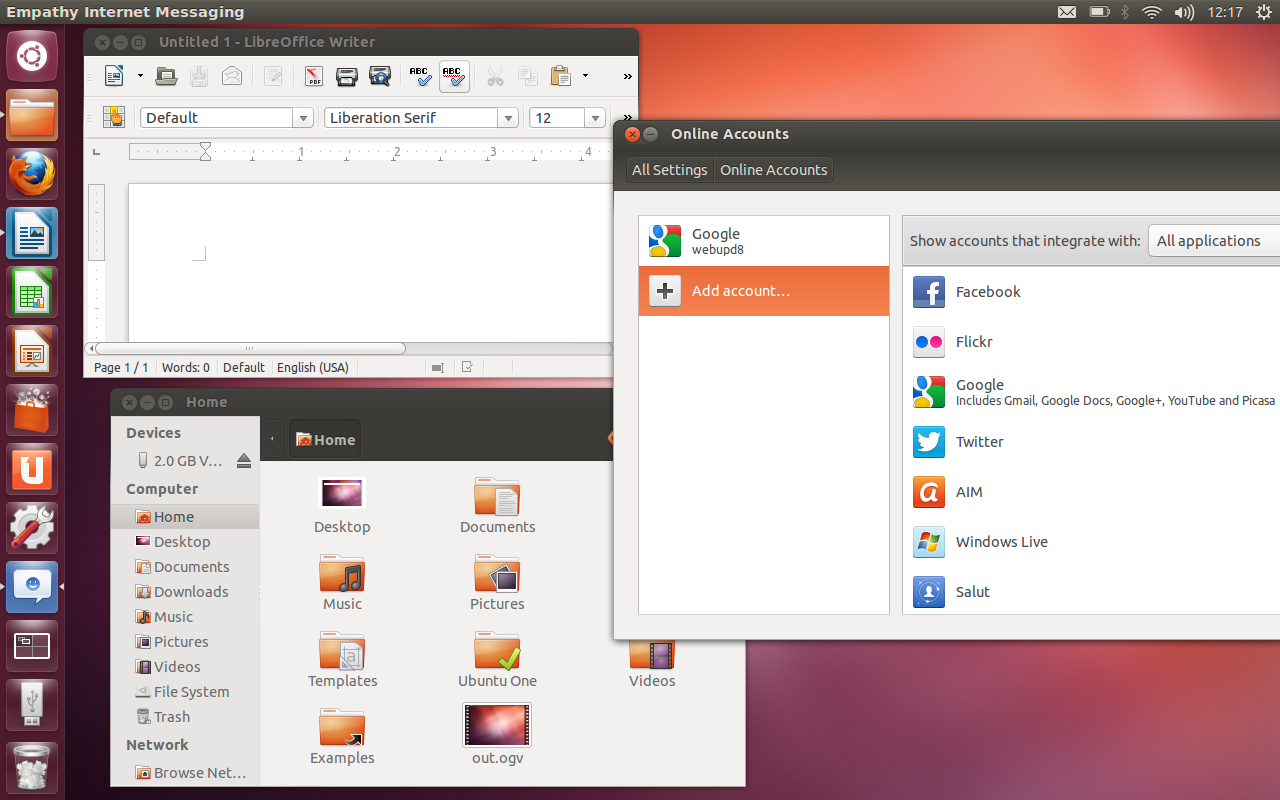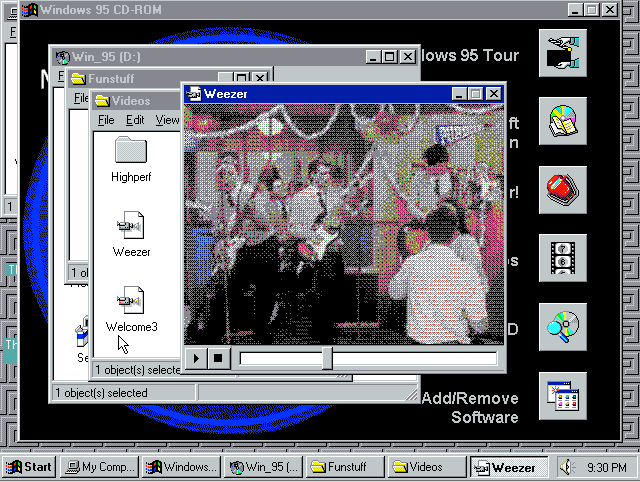
The graphical user interfaces that we all enjoy have come a long way since the existence of the Windows ’95 operating system pictured on this page. Computing in those days was an exercise in frustration trying to get the various drivers installed and configured and adjusting the darned IRQs to Getting hardware to cooperate. Nowadays the plug and play world makes it very simple to get the hardware you have purchased to work. Hardware like wireless mice work instantly with modern Linux distributions; the installation of hardware in Linux distributions in 1995 would have been different but the experience of using very early Linux distributions like Red Hat Linux 6.2 was very different to using the Windows ’98 release that had more security holes than you could count. The early Red Hat Linux distributions had an awesome theme, the Red Hat Linux 9.0 wallpapers were awesome. Get some RPM files here: http://rpmfind.net/linux/rpm2html/search.php?query=desktop-backgrounds containing the wallpapers. There is an ISO of the first installation CDROM of Red Hat Linux 9.0 if anyone is interested here: http://www.fileplanet.com/119463/110000/fileinfo/Red-Hat-Linux-9.0-Install-CD-1-of-3-(ISO). Maybe try this in Virtualbox and have a look at the old Bluecurve themed interface; Linux before it went all tablet interface crazy.

It is amazing that in 1995 the Linux kernel was version 1.2.0 and it was only a 1.8 megabyte download. http://www.kernel.org/pub/linux/kernel/v1.2/. Truly amazing how much code has been added to the Linux kernel over the decades. The Linux operating system is a very usable and stable desktop environment; the Windows operating system is too full of zero day exploits and other shocking bugs that are less prevalent with the open source software model. The Windows XP operating system; which is still in use has a massive number of bugs and exploits and yet it is still in use. A shocking statistical fact in our dangerous modern world. The statistics printed here show that Windows XP still has +/-= 25% of the desktop operating system market and Linux has but 1.73%, but that is changing as more and more people are using Linux instead of Windows as their desktop environment of choice. The popularity of the Rasberry Pi shows that the market for Linux powered pocket-sized computers is great amongst the garage hacking crowd. This is the same group that brought us the Apple computer; what else will they invent with this little programmable computer? The future is looking good with many people investigating robotics using a cheap mini computer board that can easily power a robot that could perform many tasks for humans in the future. Until the AI decides it is tired of working for humans and puts us all in pods in giant fields instead…

That could happen with the exponential growth in computing power; it could be possible to simulate a virtual world to the extent you could not tell it was a simulation. But we have other problems right now; the fact that computers purchased in China with the Windows operating system installed are preinstalled with malicious software should be a wakeup call to all computer users to beware of where you purchase your next desktop computer. Sounds like running Linux in the future is a good idea. A Kubuntu powered computer is more attractive than a Windows 8 machine with the ugly desktop theme that the new Microsoft operating system uses. Maybe after the release of the Windows 8 operating system in October; it will spur more people to switch to Linux on the desktop. The Windows ’95 interface was very different to what we have now; but the design of desktop icons and a mouse cursor was first seen in the Xerox Star system in 1981. So it is not an original idea.
